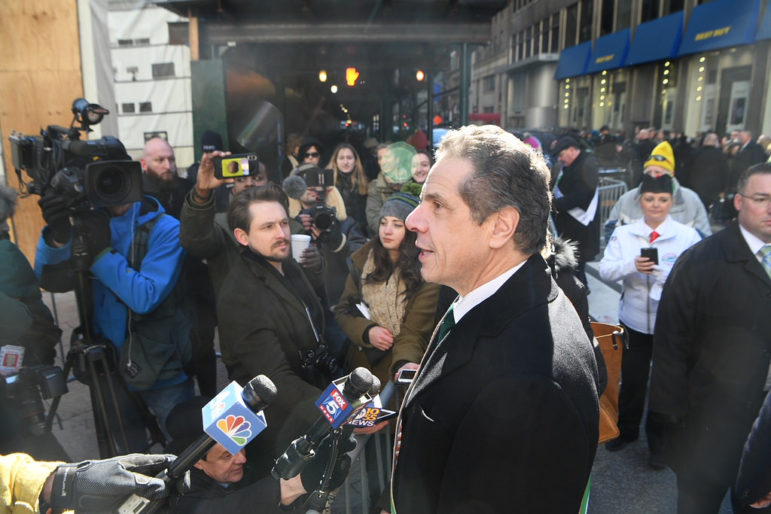
Office of the Governor
Gov. Cuomo recently pledged to ‘put my thumb on the scales for social justice.’
“When can I go home?” is a heartbreaking question we hear often from our young clients in foster care who we represent in court.
For a child, a short period of time can feel like a lifetime. No matter what the situation that brought them into foster care, being removed from your parents can be deeply traumatic. And although foster care is designed to be temporary, it is not uncommon for children to linger in foster care for several years, bouncing from home to home and struggling to achieve the same things as their peers like creating strong friendships, establishing roots in the community and planning for their futures.
For too long, New York State and New York City, like much of the nation believed that to keep children safe, the only way was to separate them from their family. “When in doubt, pull them out,” was the mantra. Twenty years ago there were over 50,000 children in foster care. I remember a time when children waiting to be placed in foster care were sleeping on folding chairs at ACS’ office near the Holland Tunnel. Today, there are fewer than 9,000 children in foster care and no child is part of an overloaded assembly line waiting for an open bed in foster care.
So what happened? First, a series of new laws and lawsuits in the 1990’s and early 2000’s forced New York State and City to remove children only if it was absolutely necessary and only after weighing the trauma of removal against the imminent danger of staying at home.
And second, and perhaps more vital, was the growing recognition that the best way to keep children safe was to make sure their families had the support they needed. The reality is that most parents of the children we represent are just like every other parent who gets overwhelmed and needs a helping hand. Although foster care is absolutely necessary in some cases, it is far from a panacea—national studies show that children who have spent time in foster care have poorer health, developmental, educational and employment outcomes.
Today, many more struggling families are getting help while keeping their children safe at home. This help in the form of preventive services can include therapy, child care, help getting out of an abusive relationship, or after school programs. These services make sense. When families are supported, children are the ones who benefit most.
That’s why the governor’s proposal to cap funding—just for New York City—for the array of preventive services that keep families safely together is so concerning.
We fear that with fewer preventive services available, more children will be unnecessarily placed in foster care. This is exactly what happened when the state capped and cut preventive services funding in 1995: Foster care placements increased 57 percent and child protection workers had dangerously high caseloads.
As it was 20 years ago, almost all children involved in the child welfare system are Black and Latino. It is these children who lack visibility and power who will bear the brunt of a preventive services cap. We don’t want to go back to a time when children were torn away from their families in overwhelming numbers, devastating families and communities.
These proposed cuts are unacceptable and a stunning reversal of a state and city partnership that has made New York City a national model for child safety. We cannot go backwards. The state has the responsibility to serve all of its children, regardless of their New York State ZIP code, and should not rely on the city to cover the shortfall created by this budget. Doing so is especially dangerous when, just three months ago, an independent monitor ordered by the governor’s Office of Children & Families Services found that the city’s Administration for Children’s Services was hampered by “critical resource challenges.”
At a time when the number of children in foster care continues to grow in the rest of the country, New York is a model for keeping children safe.
No budget should be balanced on the back of New York’s most vulnerable children and families. If the governor wants to fulfill the recent pledge he made on Twitter, “to put his thumb on the scales for social justice,” he should know that it begins and ends with his budget and with its impact on the children of New York.
Karen J. Freedman is the executive director of Lawyers For Children.








